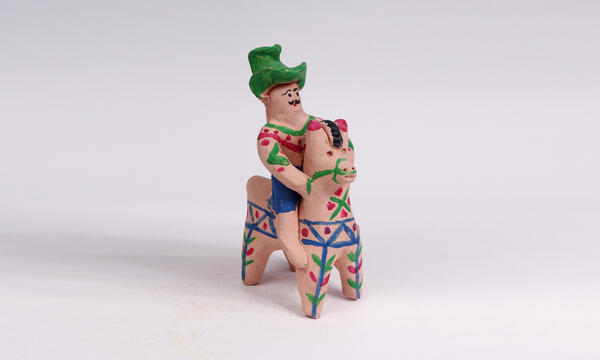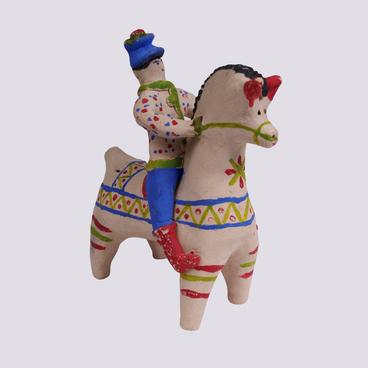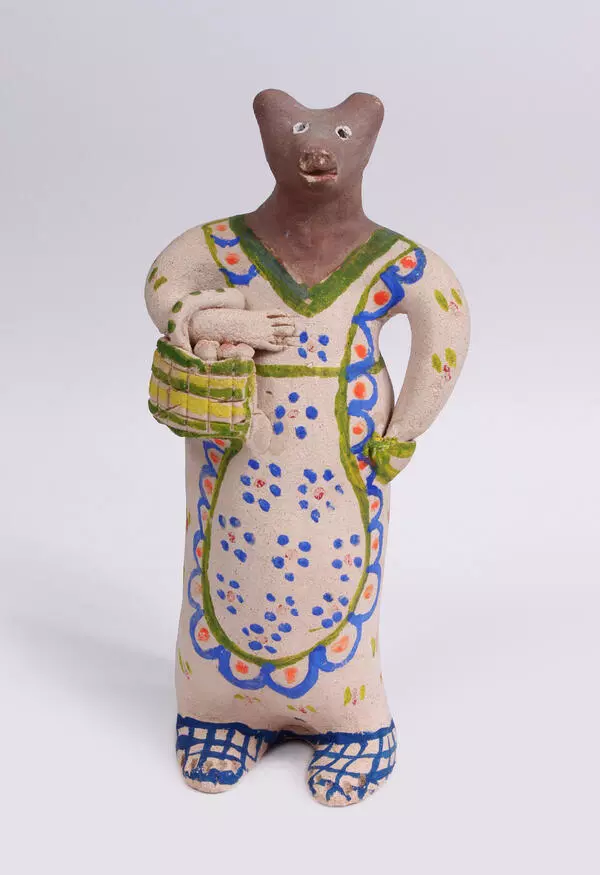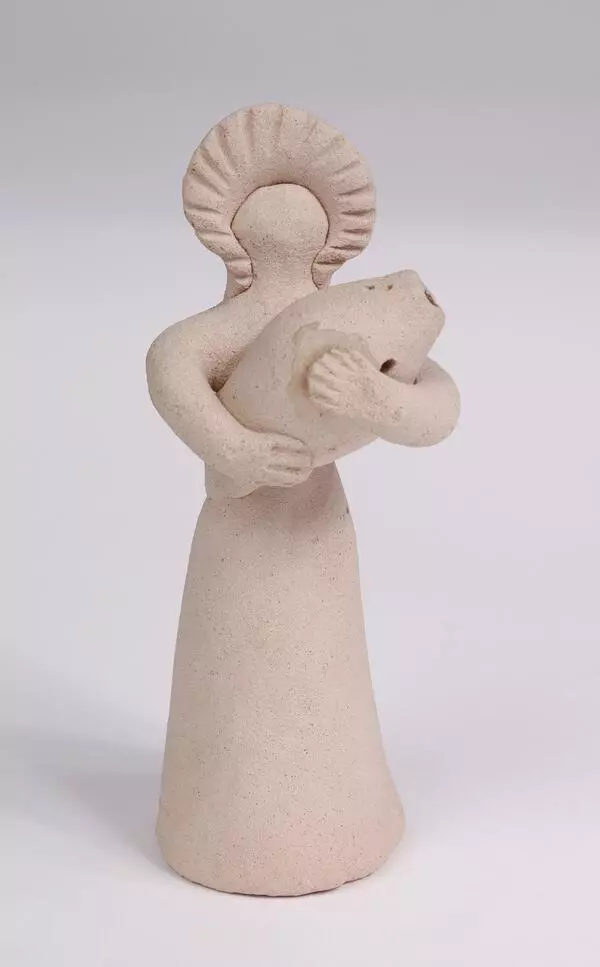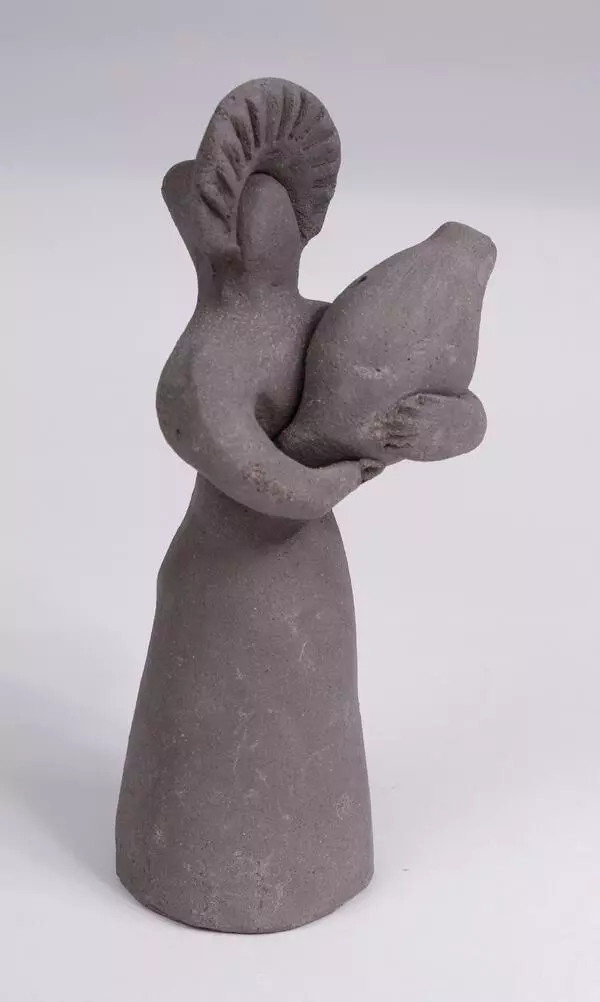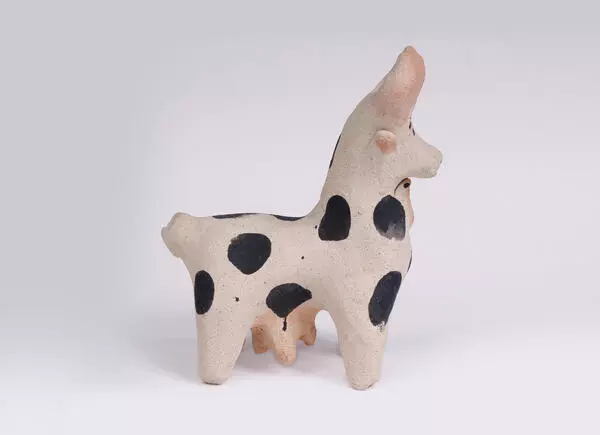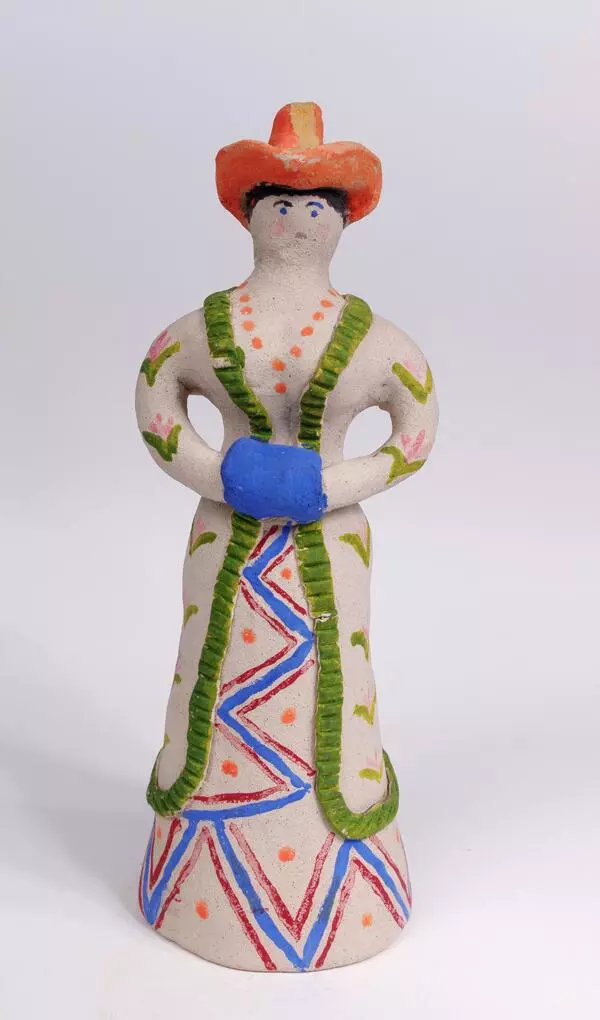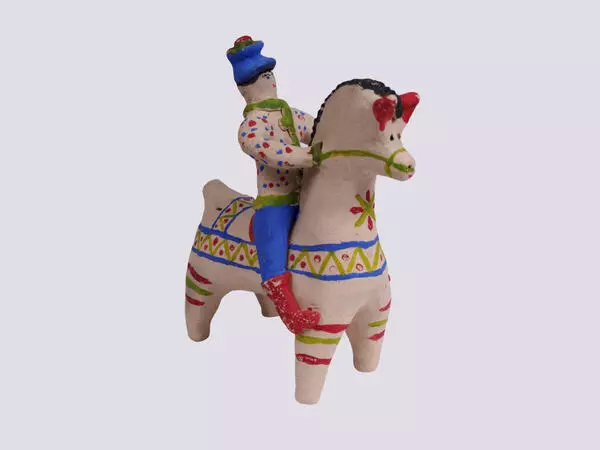The horseman in a green hat is made by the hereditary craftswoman Natalia Goncharova. She created the figurines of the horse and rider separately from each other and then connected them. Being an experienced artist, she easily found a way to stabilize the figurine — although the toy is quite high, it does not fall to the side. The secret lies in the base — a short horse rests on four legs and holds the weight of the toy.
Four centuries of the Oskol region history can be traced in the horseman’s figurine. It tells about the origin of a fortified city, which lies on high hills at the confluence of the Oskol and Oskolets rivers. By the decree of Tsar Feodor I of Russia, soldiers settled on this territory. The soldiers fought with the main enemies of that time — the Mongols and the Poles. Cossacks played a crucial role in the defense — these were the horsemen who came to the rescue of the Oskol fortress during the siege.
Over time, settlements began to appear around the fortress at the foot of the hill: Streletskaya sloboda, Ezdotskaya, Pushkarskaya, Kazatskaya. These self-explanatory names have survived to the present day. After the construction of the Belgorod abatis, the life in Oskol became increasingly peaceful; the Cossacks received time for agriculture and crafts, including pottery. Potters, who created functional and durable crockery, made fun of the craftsmen who made clay toys and called them “svistyulishniki” (“whistlers”). But the latter knew their stuff well and were happy to sculpt their “amusing” goods: birds, lambs, bears, horses and women. Locals were especially fond of the figurine of a Cossack horseman. It was considered a trademark.
Experts identify three types of the folk toy: peasant, “posad” (suburban), and urban. Peasant items are distinguished by highly simplified, conventional forms. They were produced mainly in Ryazan and Kargopol. Urban products were usually depicted some kind of a scene and marked by particular sophistication. Romanovo toys usually classified as urban.
Suburban toys are very rare. The territory outside the fortified princely, boyar or church settlement was called “posad”. Market stalls and craft settlements usually were located there. Posad toys look like something in between the urban and peasant ones. These toys are neither descriptive not oversimplified — funny pets, women with jugs and brave fellows are immediately recognizable in these figurines. At the same time, they are characterized by laconism and elegance. This rare toy was created in Stary Oskol, which is considered the heart of the craft nowadays.
Four centuries of the Oskol region history can be traced in the horseman’s figurine. It tells about the origin of a fortified city, which lies on high hills at the confluence of the Oskol and Oskolets rivers. By the decree of Tsar Feodor I of Russia, soldiers settled on this territory. The soldiers fought with the main enemies of that time — the Mongols and the Poles. Cossacks played a crucial role in the defense — these were the horsemen who came to the rescue of the Oskol fortress during the siege.
Over time, settlements began to appear around the fortress at the foot of the hill: Streletskaya sloboda, Ezdotskaya, Pushkarskaya, Kazatskaya. These self-explanatory names have survived to the present day. After the construction of the Belgorod abatis, the life in Oskol became increasingly peaceful; the Cossacks received time for agriculture and crafts, including pottery. Potters, who created functional and durable crockery, made fun of the craftsmen who made clay toys and called them “svistyulishniki” (“whistlers”). But the latter knew their stuff well and were happy to sculpt their “amusing” goods: birds, lambs, bears, horses and women. Locals were especially fond of the figurine of a Cossack horseman. It was considered a trademark.
Experts identify three types of the folk toy: peasant, “posad” (suburban), and urban. Peasant items are distinguished by highly simplified, conventional forms. They were produced mainly in Ryazan and Kargopol. Urban products were usually depicted some kind of a scene and marked by particular sophistication. Romanovo toys usually classified as urban.
Suburban toys are very rare. The territory outside the fortified princely, boyar or church settlement was called “posad”. Market stalls and craft settlements usually were located there. Posad toys look like something in between the urban and peasant ones. These toys are neither descriptive not oversimplified — funny pets, women with jugs and brave fellows are immediately recognizable in these figurines. At the same time, they are characterized by laconism and elegance. This rare toy was created in Stary Oskol, which is considered the heart of the craft nowadays.
